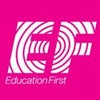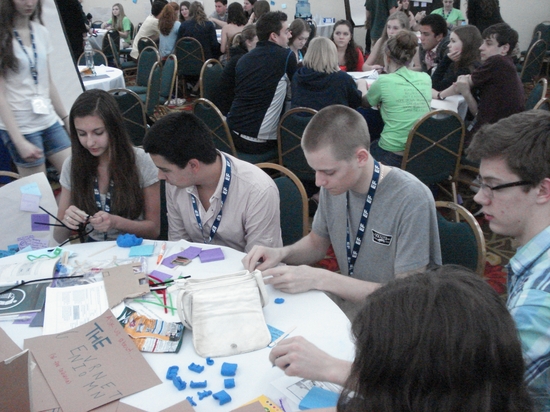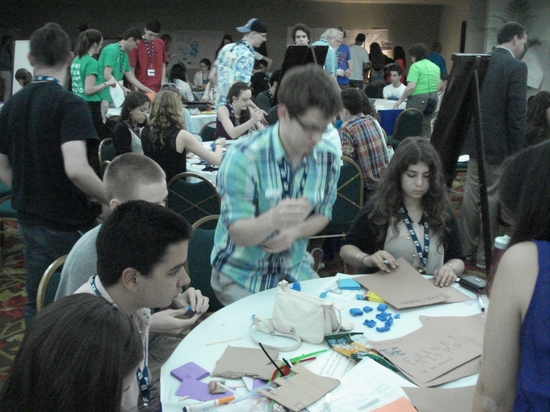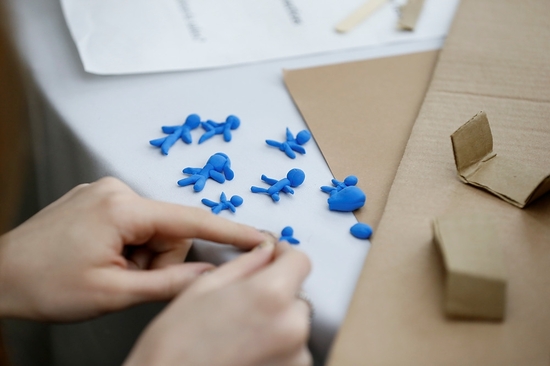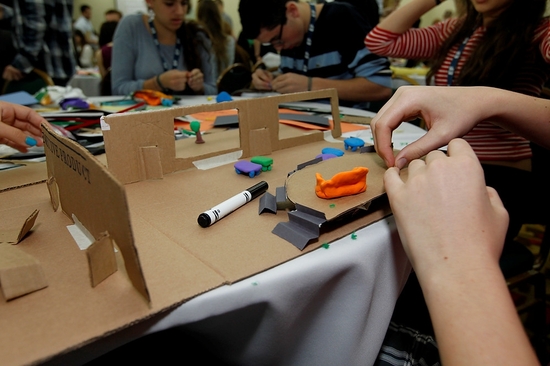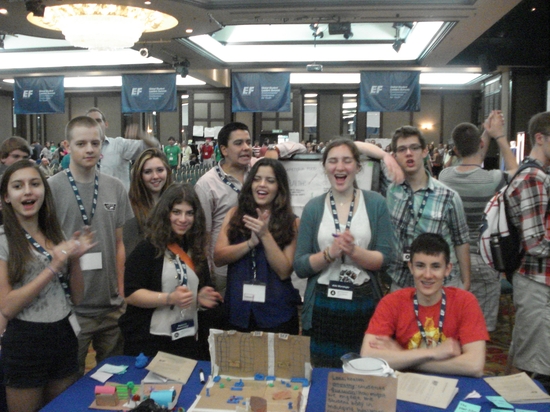By Philip Kuong, High School Sophomore, The Bromfield School
Food. A necessity of life which comes in both unhealthy and healthy forms. Seriously overlooked is how large a role food plays in people's lives. There is the saying that 'you are what you eat;' however, this is not taken into account with much thought, especially in schools. Unhealthy, greasy, food runs rampant throughout the education buildings of too many communities. Everyday, school students have to ingest "delicacies" that would not otherwise be consumed on a normal basis. As a result, kids are either skipping lunch, bringing their own, or are having to resort to other unhealthy foods that taste better.
At the EF Global Student Leaders Summit in Costa Rica, groups of about 10 student leaders and a faculty adviser were assigned to address the issue of unhealthy food in the education curriculum as part of EF's design thinking workshops.
My group, which was comprised of students from Canada, Costa Rica, and the United States, focused on trying to have schools acquire healthier foods, and have a redesigned cafeteria atmosphere that would encourage students to want to buy lunch. In order to accomplish this feat, we followed a specific design-thinking project map. We first identified the problem, thought of who would be the audience that would empathize because they are affected by the problem, then we defined what the design challenges were, identified some possible solutions to the problem, produced a working prototype of the solution, and then evolved the prototype.
My group, called the Nom Noms, decided that convincing students to buy cafeteria lunches that are healthy was the top concern. We first tried to empathize with students like us. Using an easel, markers, post it notes and paper, we each sat in a circle and presented our views of the situation. However, putting students who are passionate about the environment and who want to lead did not come without its issues. (I guess this is what real-world skills development is all about?!) Often, there would be numerous disagreements and debates on which idea made more sense. At points, the challenge of solving an environment crisis transformed into the challenge of agreeing and working with one another. Luckily, our adviser, who was a teacher in Canada, helped keep the group together and on track.
In looking around the innovation workshop, one could see how the whole setting was an amazing spectacle of brain power. Everywhere, students were sitting in groups, hunched over their tables vigorously pooling all the ideas and putting them on paper. Solutions though, proved to constantly be a struggle to put aside and follow the critical thinking process procedure in order. We would frequently developed solutions before actually addressing the problem, as the instructions suggested. The teacher adviser was very keen on keeping us on the design thinking path, though I would have been happier to get the solutions down on paper and then try and make them into reality.
The first day of the leadership summit was focused on the idea stages for the problem. The second was for the sole purpose of taking a possible solution and forming it into reality. The group decided that the best solution would be to go with redesigning the cafeteria approach to make the lunch atmosphere more pleasing, and utilizing local farms to help make the food in lunches healthier. With the various arts supplies, such as markers, clay, cardboard, tape and scissors, our group began to synthesize a model cafeteria.
When we simply were discussing the idea, it seemed like a very plausible and successful idea to undertake. However, when the cafeteria was being put into reality with just the materials of cardboard and clay, the reality of the solution began to slow down the enthusiasm of the group because it started to turn out not as we expected. The stick figures, the makeshift chairs and everything to make the cafeteria look appealing was one uniform color. The whole model was put together in a very simple fashion, making members of the group question the effectiveness of the proposed solution. But we realized we had to be creative! The figures and minute objects meant to go in the cafeteria were pretty well crafted, including the tables, people, and outdoor farms from where the school would get its home grown food.
Once finished, all of the student groups set up their projects in an Innovation Village. There, all of the fantastic, innovative design builds were erected and set up like a science fair. This was where judges and students went around viewing everyone else's projects. Compared to the other groups, ours didn't look like much - but our ideas were well-defined and explained.. Summit judges were assigned to pick four winners and the students themselves were allowed to vote on which project appealed to them the most.
Even though we didn't get end up winning the competition, I can say I am proud of what my group accomplished. We were given a very hard problem, defined it, worked together as one to come up with a solution, and then finally constructed a working model within a very short amount of time. Even though our project was simple, the model did what it needed to do and we learned a lot about creative problem-solving in the process.
All of us traveling to Costa Rica are excited to experience a new culture and share our ideas with students from around the world through EF's Summit! Follow us on Twitter at #EFSummit or on Facebook at www.Facebook.com/EFSummit.
About the Global Student Leaders Summit Series
This post is part of a series produced by The Huffington Post and EF Education First, in recognition of the 2013 EF Global Student Leaders Summit in Costa Rica (April 20 and 21). Each year, the EF Global Student Leaders Summit brings together hundreds of high school students and teachers from around the world for experiential learning tours and a leadership and innovation conference to help the next generation of leaders understand and solve critical global issues. Learn more about EF Education First and the Global Student Leaders Summit.
